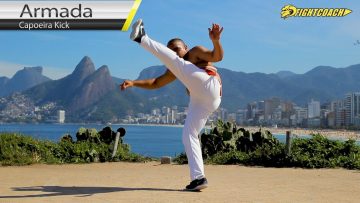BJJ
Brazilian jiu-jitsu (/dʒuːˈdʒɪtsuː/; Portuguese: [ˈʒiw ˈʒitsu], [ˈʒu ˈʒitsu], [dʒiˈu dʒiˈtsu]) (BJJ) is a martial art, combat sport, and a self defense system that focuses on grappling and especially ground fighting. Brazilian jiu-jitsu was formed from early 20th century Kodokan Judo ground fighting (Ne-Waza) fundamentals that were taught to, Luiz França and Carlos Gracie by master Mitsuyo Maeda 前田 光世. Brazilian jiu-jitsu eventually came to be its own art through the experimentations, practices, and adaptation from the Judo knowledge of Carlos and Hélio Gracie, who then passed their knowledge on to their extended family.
BJJ promotes the concept that a smaller, weaker person can successfully defend against a bigger, stronger assailant by using leverage and proper technique, taking the fight to the ground – most notably by applying joint-locks and chokeholds to defeat the other person. BJJ training can be used for sport grappling tournaments (gi and no-gi) and mixed martial arts (MMA) competition or self-defense. Sparring (commonly referred to as “rolling”) and live drilling play a major role in training, and a premium is placed on performance, especially in competition, in relation to progress and ascension through its ranking system.
Since its inception in 1882, its parent art of Judo was separated from older systems of Japanese ju-jitsu by an important difference that was passed on to Brazilian jiu-jitsu: it is not solely a martial art: it is also a sport; a method for promoting physical fitness and building character in young people; and, ultimately, a way (Do) of life.
Mitsuyo Maeda, was one of five of the Kodokan’s top groundwork (Ne – Waza) experts that judo’s founder Kano Jigoro sent overseas to demonstrate and spread his art to the world. Maeda had trained first in sumo as a teenager, and after the interest generated by stories about the success of Kodokan Judo at contests between Kodokan Judo and jujutsu that were occurring at the time, he changed from sumo to Judo, becoming a student of Jigoro Kano. Maeda left Japan in 1904 and visited a number of countries[7] giving “jiu-do” demonstrations and accepting challenges from wrestlers, boxers, savate fighters and various other martial artists before eventually arriving in Brazil on November 14, 1914.
Gastão Gracie was a business partner of the American Circus in Belém. In 1916, Italian Argentine circus Queirolo Brothers staged shows there and presented Mayeda. In 1917, Carlos Gracie, the eldest son of Gastão Gracie, watched a demonstration by Maeda at the Da Paz Theatre and decided to learn judo. Maeda accepted Carlos as a student and Carlos learned for a few years, eventually passing his knowledge on to his brothers.
Although the Gracie family is typically synonymous with BJJ, another prominent lineage from Maeda via another Brazilian disciple, Luiz França. This lineage had been represented particularly by Oswaldo Fadda. Fadda and his students were famous for influential use of footlocks[11] and the lineage still survives through Fadda’s links with today’s teams such as Nova União and Grappling Fight Team.
Sibling Hélio Gracie gradually developed Gracie Jiu Jitsu as a softer, pragmatic adaptation from Judo that focused on ground fighting, as he was unable to perform many Judo moves that require direct opposition to an opponent’s strength.







